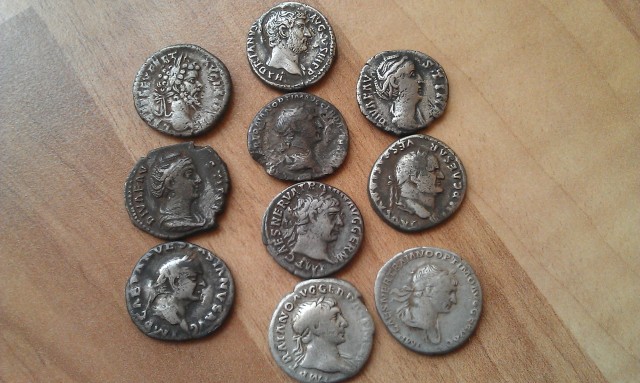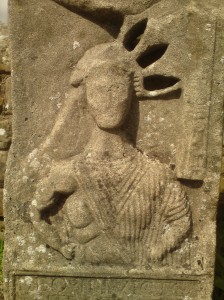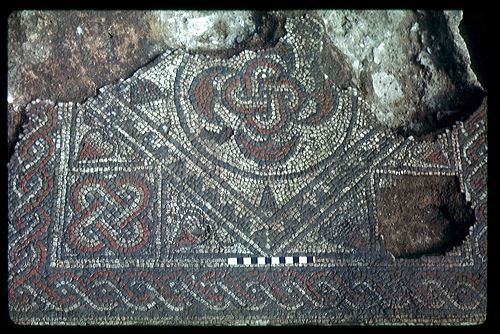WHEN is anybody going to see some of the 100,000 ancient artefacts – Ice Age to Anglo-Saxon – that were found alongside the A46 Fosse Way during the recent road dualling project? The question has arisen twice at events I’ve been involved with in the last fortnight. At the first, a visit to Newark and Sherwood District Council’s resource centre in Newark, where WEA adult learners saw and handled some of the many Romano-British items owned by the authority, we learned that the only artefacts from the A46 dualling which will eventually go on display in Newark will be the Ice Age flints which were found at Farndon. That’ll be 2015 at the earliest. At the second event, a talk on Margidunum which I gave in East Bridgford, general exasperation was expressed that the general public in Nottinghamshire has yet to see any of the artefacts recovered ahead of the £362m dualling of 17 miles of the A46. That project was completed last summer and, to date, the only public report on the archaeology has been a 16-page summary titled Following the Fosse Way Through Nottinghamshire. A full public report has often been vaguely promised but has not appeared and artefacts which could have been gone on tour to local schools and village halls at little cost but great educational advantage have been kept out of sight by private archaeological consultants. This is outrageous when you consider that the Highways Agency’s bill, including the cost of the archaeology work, was actually paid for by public money. Then again, having dealt with both the Highways Agency and two big archaeology consultancies during the course of writing two Roman books, I’ve learned not to expect a great deal from some consultancies. Their first loyalty is to their contract, not the general public. Ditto the Government agencies which employ them. Perhaps it’s time the rules governing archaeological investigations of such big schemes were rewritten to take into account the interests of the public who actually pay for them. But now for a recap. At Newark, we learned that it is likely that the town’s new museum, housed in the old Magnus School building, will not open until 2015. Although the HLF-supported museum will be heavily orientated towards Civil War history, many of the area’s best Iron Age and Romano-British items will also go on display. These will include the famous golden Iron Age Torc (which is currently on loan to the British Museum – since Newark has never had the facilities to display it), Roman lead coffins, mosaic pavements from the Norton Disney villa and the delicately gorgeous cavalry helmet cheekpiece that T.C. Smith Woolley recovered from Crococalana (Brough) over 100 years ago.
These are currently carefully stored in Newark and Sherwood’s resource centre, along with 60,000 other items, and as collections and learning assistant Kevin Winter told us, this sheer volume means the authority now has to be choosy about what other artefacts it can take in. And so far as the A46 goes, they’re only taking the flints from Farndon. In which case I would speculate that other items, possibly including an eye-catching Bronze Age beaker recovered from a burial, will be going to the University of Nottingham archaeology museum. But when? And why wait so long to see it all? That was the subject of a conversation a week later at East Bridgford following my talk on Margidunum, the Roman town about half a mile down the road where the A46 archaeologists found the mass burial of 17 Romano-British babies. We’re still waiting for a report on that one too. All agreed it was shocking that so little information about the A46 finds has been made available to the public.
Quite apart from the educational impact of seeing artefacts (think how interesting it would have been to children to have a mobile display come round to their schools for the day), gaining constructive knowledge of the ancient history on your doorstep might even have a tourism benefit. This indeed was the issue raised by a villager at Colston Bassett when the Highways Agency mounted an information evening about the A46 finds in early 2010. This elderly villager put his hand up and asked whether the archaeology results would be published so that everybody could read them. He was told that while a summary might be available, a detailed report would probably not be made available. I attended that meeting and can also still remember my encounters with the suspicious mindset of a Highways Agency ‘public liaison manager.’ After the HA presentations I asked this official about obtaining photographs of the A46 archaeology. Reiterating that photographs of the excavations could only be obtained directly from the Highways Agency, she said, ’after all it is their road.’ She then quickly corrected herself and added, ‘well, actually it is the taxpayers’ road since we all pay for it.’ That little verbal slip may tell you why the people of Nottinghamshire are still unable to see any of the 100,000 artefacts that were dug up alongside the Fosse Way. Please note that the photographs on this page were all taken by me with permission of Kevin Winter of Newark and Sherwood District Council.

























